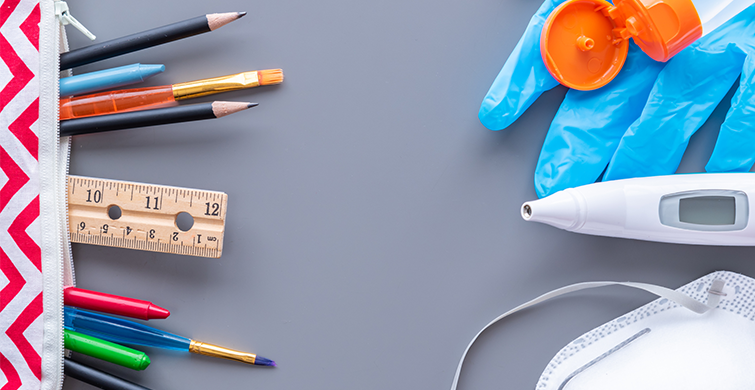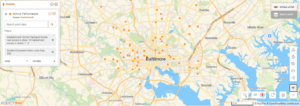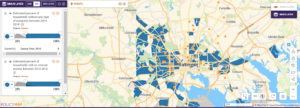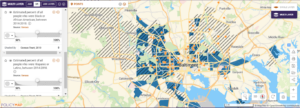Racial Inequities in Education Exacerbated by COVID-19

Data
School Performance
Source
GreatSchools
Find on PolicyMap
- Education
- Education Points
- School Performance
- Education Points
“… we’re going to be seeing [funding] cuts … as schools are trying to get ready for what is arguably the most important beginning of a school year that will happen in the lifetimes of these children.” – Senator Tina Smith of Minnesota
As an unprecedented school year of distance learning winds down for many students across the US, disparities in access to quality education across racial lines persist, and they will likely be exacerbated next fall. School districts are facing budget cuts and funding requirements of millions of dollars to meet new federal health guidelines around safely reopening in August amid COVID-19. Those school districts that are already underfunded, many of which serve more minority students, will be doubly impacted.
Along with budget concerns, school districts are also facing the prospect that students have fallen behind due to COVID-19-related school closures, potentially widening the achievement gap between students of color and white students. For schools that were lower performing prior to the pandemic, addressing equity will be crucial when planning for reopening of schools.
Identifying which students are at higher risk of falling behind and needing support is key to addressing inequality exacerbated by the pandemic. Students may need help with catching up on missed learning opportunities while awaiting distance learning devices. Or they may have missed online instruction due to lack of internet service availability. These challenges in keeping up with grade level expectations may be eclipsed, however, by social-emotional needs due to COVID-19-related isolation and/or illness.
Looking at public schools on a sample map of Baltimore, we can filter schools with performance challenges and with fewer counselors for mental health support. The schools on the map have comparatively lower capacity to help students “catch up” academically and recover from the emotional toll of quarantine.

Next, we can see where families lack access to electronic devices for remote learning: laptop or desktop computers. This is likely an undercount of need, given that adults in the house may need to use the device(s) for work. We can also see which of these areas don’t have internet subscriptions. Although many internet service providers have guaranteed low-cost internet service to all families during COVID-19, access is not always readily available.
This map shows that the lower-capacity schools serve a disproportionate number of households without requisite tools for participation in distance learning.

Looking at struggling schools and their digitally divided neighborhoods through the lens of racial disparities reveals the inequitable access to distance learning and support by Black and Latinx children in Baltimore. However, these disparities are not limited to Baltimore. Nationally, Black and Latinx children across the US had less access to online resources once classes were moved to a distance learning format. If we add Black and Latinx populations to the map, we see that areas served by lower capacity schools, that are also limited by the digital divide, frequently align with neighborhoods of primarily Black and Latinx residents.

Providing resources in the form of electronic devices, internet access, tutoring and social-emotional resources to students in these schools is a question of racial equity. As school districts consider the expensive prospect of reopening, serving students equitably will be crucial to the success of all of our children.